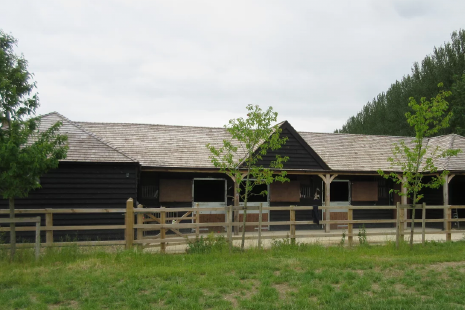Tuesday 7th February, 2017

February is here and we can finally put the winter months behind us and look forward to welcoming spring. For the most part, our equine friends have been kept stabled or turned out on minimal grazing due to muddy paddocks and frozen fields but as the frosts thaw it is time to turn our attention to necessary maintenance needs. Fencing, field shelters and stables are subject to extreme weather over the winter season which can cause a great deal of damage, so make sure you set aside time for some essential paddock preparation this month.
Keeping your horse safe when they are turned out in the field has to be one of the biggest priorities for horse owners. There are many types of fencing available, including electric tape, post and rail, PVC and mesh wire, as well as traditional stone walls and hedges. When checking your fencing, you need to look out for any gaps, breaks or weak spots, and electric fences need to be tight and not loose, so that they don’t pose a safety risk for horses. Fence posts should be upright and solid in their foundations, not loose or falling to one side, and rails should be sound and not splintered. If any fence posts, rails or panels are compromised it would be very easy for them to break if leant on by your horse, jeopardising both his safety and security.
As well as keeping your horse securely confined, you also need to provide safe shelter for him too. Long hours spent in a stable during the winter may have taken its toll, so check your stable doors and walls for damaged or weak panels and loose bolts. Shelter is just as important out in the field, and muddy paddocks mean that you may be moving your horses regularly to rest the grazing. Vale Equestrian offer a wide range of mobile field shelters to provide perfect accommodation in any area of your paddock. With sizes starting from 8’ x 10’ up to 12’ x 36’, these sturdy mobile field shelters come complete with pressure treated timber skids, or the more popular galvanised steel skids for regular towing to new locations around your field.
When the weather starts to improve, so too do foraging opportunities as grazing recovers from the harsh winter season. Your fields still need a bit of TLC before they become the main source of nutrition for livestock, and you horse will still be very dependent on hay and hard feed initially. Start paddock preparation by using temporary fencing to section them off for harrowing, seeding, rolling and resting. You can then use this fencing to rotate the sections once the new grass comes in, and limit equine access to the fructan-rich spring grass which can lead to colic and laminitis.